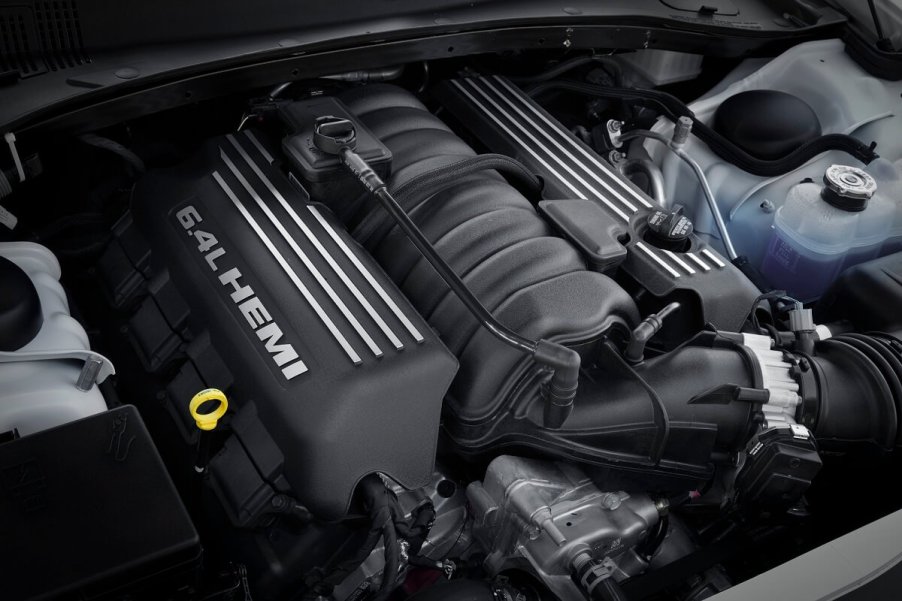
What the Heck Is a HEMI?
It might be one of the most quotable car person questions from sea to shining sea: “Is that a HEMI?” At this point, it is more a joke query than a legitimate question. However, the HEMI is no joke. The HEMI is a four-letter word synonymous with Dodge horsepower, from classic NASCAR dominators to modern road monsters. So, then, what the heck is a HEMI?
What is a HEMI?
“HEMI” is short for the term “hemispherical,” or a half-sphere. In terms of the beloved Dodge engines, it refers to the shape of the combustion chamber. However, it should be noted that the engines have never honestly had a half-sphere shape. The Drive reports that the first hemispherical engine wasn’t a Dodge or even an automobile engine. Instead, Allie Ray Welch built the first hemispherical powerplant in 1901. Further, it was a two-cylinder engine design destined for use in a boat. It couldn’t be further away from the monster displacement V8s in our favorite Mopars today.
Is a HEMI V8 better than a standard V8?

Perhaps it is unpopular to say so, but no, a HEMI is not really any better than other V8s. Frankly, in some cases, you can get around the same amount of horsepower out of a dual overhead cam (DOHC) engine design with far less displacement. However, it is difficult to turn your nose up at the old-school appeal of immense power from a big displacement pushrod V8.
However, there are some benefits to a hemispherical combustion chamber in an engine. Chiefly, the shape facilitates the operation of larger valves. As a result, airflow and exhaust flow are less restricted, resulting in more complete combustion. More complete combustion and improved air/exhaust flow mean more horsepower. There is a tradeoff, however. HEMI engines are not only sizable but also environmentally unfriendly. Specifically, hemispherical designs put out heightened levels of nitrogen.
Which cars have these engines?

Many Dodge vehicles have packed HEMI engines for decades. In fact, the first Dodge vehicles with the storied powerplants came about in 1953, using a design based on Chrysler’s 1951 HEMI engine. After the pioneering Hemi cars, sixties icons like the Dodge Charger Daytona packed the beloved powerplant. It should be noted that the HEMI-powered Charger Daytona and its characteristic shark nose and wing combination set the oval racing speed record for stock cars at over 200 mph.
HEMI engines have stood the test of time, with the latest iterations continuing to be manufactured by horsepower holdout Dodge. The beloved reboot of the Dodge Challenger with its potent 6.1L V8 was emblazoned with namesake badges on the hood and rear spoiler. Additionally, noteworthy muscle sedans Dodge Charger and Chrysler 300 SRT8 packed the famous American heart.
Of course, those cars are the teaser for the main course of Mopar horsepower. Dodge’s beloved Apache 392 cubic inch and the iconic Hellcat V8s are also HEMI engines. That’s right, the supercharged 6.2L Hellcat engines bestowing the Charger, Challenger, and others with over 700 horsepower are proud, shrieking HEMIs. Scroll down to the following article to read more about the 392 HEMI and a beastly car that uses it to tear up streets.
Keep up with MotorBiscuit for the latest Mopar content!



